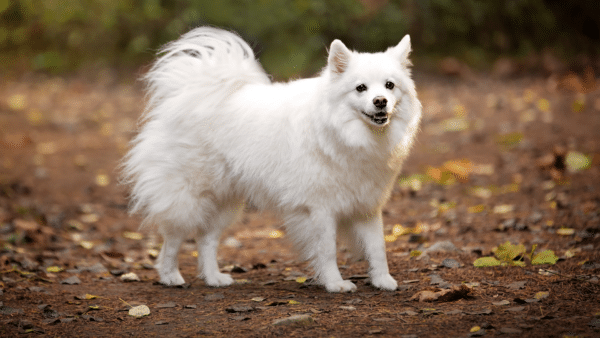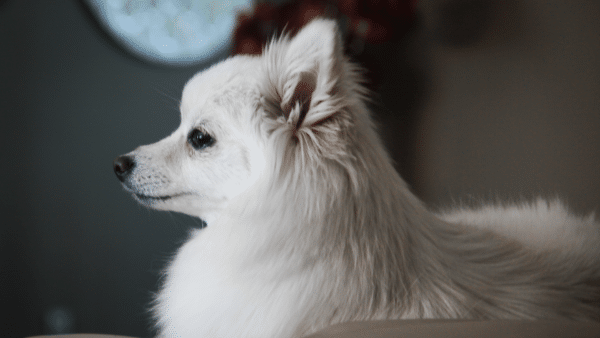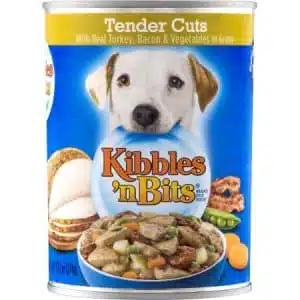
American Eskimo Dog Breed Guide: Facts, Health and Care
American Eskimo Dog Breed
Sharing personality features with most Spitz breeds, the American Eskimo Dog (affectionately called “Eskies”) is a friendly, alert, and intelligent medium-sized dog breed.
They are one of the easiest-to-train breeds, as their well-known history in circus life attests. Learn more about this playful and smart breed in this complete American Eskimo Dog breed guide.
Breed Basics
| Breed Group | Non-Sporting Group |
| Temperament | Perky, smart, playful |
| Life Span | 13–15 years |
| Weight | 10-20 pounds (miniature), 25-35 pounds (standard) |
| Height | 9-12 inches (toy), 12-15 inches (miniature), 15-19 inches (Standard) |
| Colors | White, white with biscuit cream |
| Origin | Germany |
American Eskimo Dog History
Similar to the Coton De Tulear dog breed that traveled from France to Madagascar, Northern Europeans migrated to the United States in the early 1900s, and brought their dogs along. Back at that time, small Spitz breeds descendants of the German Spitz, the Pomeranian, the Volpino Italiano, and the Keeshond were highly popular in Europe and accounted for many of the dogs that reached America.
Although white was not the preferred color in Europe, it became the preferred color in the US and after the end of the First World War, Americans changed the name of the breed and started to refer to it as “American Eskimo Dog” as a result of popular disliking of everything of German origin.
This new name has been used since as early as 1919, however, the breed has not been officially recognized by the AKC until many decades later, in 1995.
Best Dog Food for American Eskimo Dog Breed
Choosing the best dog food for the American Eskimo dog breed involves considering their size, energy levels, and potential sensitivities. Opt for a high-quality dog food formulated for small to medium-sized breeds, balancing proteins, fats, and carbohydrates. Real meat, as the main ingredient, is essential for muscle health, and whole grains, vegetables, and fruits can contribute to a well-rounded diet.
The One Thing Pet Owners Regret Not Doing Until It’s Too Late
Is your pet safe?
1 in 3 pets will need emergency veterinary treatment each year and it is estimated a pet receives emergency care every 2.5 seconds in the U.S.
The average cost of treating a broken bone in dogs is $2,700. Cancer treatments? Up to $10,000.
It’s why so many pet owners say their biggest regret isn’t the vet bill—it’s not having pet insurance when they needed it most.
Ask yourself: “If an unexpected $5,000 vet bill hit tomorrow, could I afford it?”
If the answer is no, it’s time to get covered.
Take a look at Lemonade. They have a great app that actually works, they have an instant chatbot that is faster and, dare we say it, friendlier than most companies’ “real” customer service and a quick scroll through Reddit will uncover… people are really vibing with this brand.
So go check them out and take a look. It takes less than a minute.

- Features farm-raised beef as the number one ingredient and this naturally delicious premium food is made with added vitamins, minerals and nutrients.
- Made without artificial preservatives or flavors and with colors only from natural sources.

- Medium adult dry dog food formulated with precise nutrition specifically made for dogs 1–7 years old weighing 23–55 lb.
- Supports natural defenses for immune support with a blend of prebiotics and antioxidants for dogs.
- Maintains healthy skin and a healthy dog coat with optimal levels of EPA and DHA.
- Promotes dog digestive health with easy-to-digest proteins and a balanced supply of fiber.
- Palatable, medium breed adult dog food has an exclusive kibble design to encourage chewing.

- Complete and balanced nutrition has antioxidants, vitamins and minerals to help maintain a healthy lifestyle.
- Optimal levels of omega-6 fatty acid nourish the skin and help keep his coat shiny and healthy.
- Whole grains and a special fiber blend support healthy digestion with a delicious roasted chicken flavor.
- Unique, crunchy texture helps clean the teeth with every bite to support good oral health between brushings.
- Proudly made in the USA with the world’s finest ingredients; contains no high fructose corn syrup, artificial flavors or sugar.
The appearance of the American Eskimo Dog
Compact and well-balanced with a deep, broad chest and well-sprung ribs, the American Eskimo Dogs present an alert, agile and cheeky attitude. Some of their distinctive features include a dense, white coat with a fluffy ruff around the chest and shoulders and a face with a black nose, lips, and eye rims.
Size
There are three different recognized sizes for the American Eskimo Dog according to the AKC (all measured at the withers):
- Toy: 9 to 12 inches
- Miniature: 12 to 15 inches
- Standard: 15 to 19 inches
There is no ideal size within each division. However, dogs that are under 9 inches or over 19 inches are not included in the breed standard set by the AKC.
Coat And Color
American Eskimo Dogs have a dense undercoat and a long outer coat that forms a pronounced lion-like ruff around the neck. This ruff is more noticeable in males than in females.
The face is covered with shorter hair, while the body has medium-length hair (except for the ruff). The back of both fore and hind limbs are well feathered, as is the fluffy tail.
White is always the preferred color, although the breed standard allows for a combination of white and biscuit cream markings.
Grooming And Maintenance
The oil present in the American Eskimo Dog’s fur prevents the dirt from adhering to the coat, making it easy to keep clean.
However, Eskies are almost constantly shedding, so frequent and thorough brushing is needed at least a minimum of three times a week. A good fur remover like Alpha Paw’s Magic Pet Fur Remover is also recommended as they do tend to shed a lot.
Brushing does not only remove dead hairs and debris from the skin, it also prevents matting. In breeds with a dense undercoat, matting can block airflow to the skin and potentially lead to skin problems such as fungal infections or hot spots.
American Eskimo Dogs can be bathed only occasionally, not more than 3-4 times a year, as excessive bathing can dry and irritate their skin. As with all breeds, nails need to be trimmed before they touch the ground. I recommend using an Alpha Paw nail trimmer as it’s easy to use, and comfortable for pets.
American Eskimo Dog Temperament & Personality
A dog with a big-dog attitude, American Eskimo Dogs are perky, playful, smart, outgoing, and loyal. They’re brave dogs, much like Dachshunds and other four-legged animals.
They are very social and love to be a part of the family and can develop behavioral problems when neglected or forced to spend several hours a day on their own. They are very friendly with their family but tend to be reserved toward strangers.
Training Your American Eskimo Dog
Due to their high intelligence and their eagerness to please, American Eskimo Dogs are one of the most trainable breeds, as their well-known history as circus dogs attest. They are quick to learn commands and tricks and excel at obedience and agility competitions.
American Eskimo Dog Exercise Requirements
Eskies are highly active dogs and need both regular exercise and mental stimulation. Dogs that are not given a chance to steam off their high levels of energy can quickly become destructive or develop behavior problems.
Once they reach middle age, however, they become calmer and their exercise needs decline, still needing at least a brisk walk or some play-fetch time a day.
Common American Eskimo Dog Health Issues
American Eskimo Dogs are generally a healthy breed. It’s important to ensure that they are vaccinated against health issues such as Kennel Cough when it is a pup.
There are two common conditions that affect the breed, we can find hip dysplasia (an incorrect alignment between the hip socket and the upper thigh bone at joint level) and progressive retinal atrophy (a condition in which the photoreceptors begin to degenerate, leading to loss of vision).
Because they’re a small dog breed, consider having a dog ramp in the home. They’ll have more mobility without the risk of injury.
Health Concerns
Hip dysplasia
Progressive retinal atrophy
Recommended Health Tests from the National Breed Club
Hip Evaluation
PRA Optigen DNA Test
Ophthalmologist Evaluation
Read the full Official Breed Club Health Statement here.
Diet and Nutritional Needs: Feeding Your American Eskimo Dog
Eskies should be fed high-quality food, either commercially manufactured or home-made with natural ingredients (and always under the strict supervision of a veterinarian or a pet-nutrition specialist). The nutrient content must be balanced according to the dogs’ age and energy expenditure level.
Ensure that your Eskimo dog does not go hungry by setting a regular schedule for mealtime.
Fresh, clean water should be available at all times. Treats are great aids in training these gluttonous dogs, but too many can cause obesity. Whenever possible, go with healthy dog treats, with natural ingredients and low-calorie content.
High-quality food should cover all the nutritional needs, but supplementing Eskies with salmon oil for dogs would help keep their joints healthy and their coat shiny.
Tips for Adopting and Raising an American Eskimo Dog
Given the fact that American Eskimo Dogs have not been recognized by the AKC until quite recently, breeding practices have not been entirely focused on targeting the genetic predispositions of the breed.
Once the predispositions have been determined, breeders started to scan their dogs for health issues (mainly hip dysplasia and progressive retinal atrophy) with the intention of decreasing the incidence of these conditions by removing carriers from their breeding stock.
A responsible breeder will always provide proof of periodic genetic testing and ideally be registered in the national breed’s club or the AKC. Purchasing from reputable breeders can ensure getting a puppy from a good, healthy bloodline.
Eskie puppies are playful and very energetic. They need to be socialized from an early age, and obedience training is also recommended to start early: it will not only teach the pup basic commands and some fun tricks but also help him grow into a well-balanced dog.
American Eskimo Dog FAQs
Q: Are American Eskimo Dogs good pets?
A: Yes! Eskies are great companions for children and adults alike, provided that they get enough attention. They don’t like being alone so they are not recommended for households that are empty for many hours a day.
Q: Are American Eskimo Dogs dangerous?
A: Even if they are reserved toward strangers, American Eskimo Dogs are seldom aggressive and hence are not considered a dangerous breed.
Q: How much does an American Eskimo dog cost??
A: Depending on their breeding and bloodline, Eskies can cost from $1,000 to $3,000.
Q: Do American Eskimo Dogs shed a lot?
A: Yes. These dogs shed almost constantly and it can be an intense experience for an inexperienced owner. Frequent brushing, however, can very easily keep shedding under control.
- Official Breed Club: American Eskimo Dog Club of America
- American Eskimo Dog Rescue: American Eskimo Dog Club of America rescue
- Official AKC Profile: American Eskimo Dog Breed Information
- Breed Standard: Official Standard for the American Eskimo Dog
- Find a Puppy – AKC Marketplace: American Eskimo Dog AKC PuppyFinder
Recommended Products for American Eskimo Dog
Product 1: https://www.alphapaw.com/products/pawramp
Product 2: https://www.alphapaw.com/products/cozy-calming-bed-for-dogs
Product 3: https://www.alphapaw.com/products/dog-car-safety-seat
Learn More About Small Dog Breeds
Check out our list of other small dog breeds!
80% of Dogs Develop Arthritis or Joint Pain by 7 Years old – Here’s How to Protect Them
Most of us train our dogs when they are puppies to jump up on furniture. We think it’s harmless (and easier than always lifting them), but for dogs, couches and beds are very high compared to the size of their bodies.
Every time they jump it compresses their back and applies enormous force to their joints.
It’s no wonder that an incredible 80% of dogs experience arthritis or joint pain by only 7 years old.
Luckily, there is a vet-recommended solution.
It’s the PawRamp by Alpha Paw. An adjustable ramp that allows dogs to safely get on and off couches and beds. PawRamp makes joining you in bed or on the couch effortless and fun.
As a bonus, you can use code SAVE35 to get $35 off the PawRamp today.

















